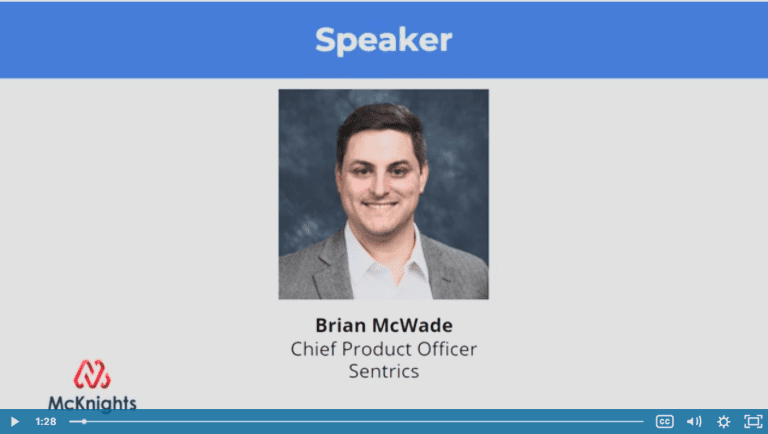The decision of “putting” a loved one in a senior living community can be tough. Inevitably, it conjures up some feelings of guilt, particularly when their loved one gets to an assisted living environment.
Senior living operators see this type of reaction daily. And it raises a question: Are there new tools or strategies to help allay those feelings?
If senior living communities want residents to be satisfied and stay longer, the family members need to feel confident that their loved one is happy and cared for. They want to know that “mom is okay,” or that “dad is socially engaged in the community.” They need to be able to interact with them, receive updates they trust, and be assured that they made a good decision.
That’s why senior living communities need to drive family engagement.
Family Engagement and Resident Wellbeing
Although it may seem obvious, few realize just how important family engagement is in a resident’s health and happiness. Sadly, when residents transition into senior living communities, many lose touch with their family members. Feelings of abandonment occur. According to Senior Housing Business, “Despite family members’ best intentions or desires, 41 percent of the 1.7 million Americans in assisted living communities don’t receive a weekly family visit.”
For residents who rarely receive visits or don’t see any family members at all, this can lead to a host of negative feelings, including:
- Loneliness
- Anxiety
- Isolation
- Depression
Family ties play a key part in resident mental and physical health. Whether it’s having conversations and playing games or simply spending time together, residents crave the ability to stay connected with their loved ones. Those with more frequent interactions and stronger family bonds can expect the following benefits:
- Longer life – Residents with increased family engagement are likelier to outlive those that don’t. This comes from higher levels of emotional support, and having someone they can call upon when they’re feeling down. This engagement with family serves as an anchor, a reason to stay healthy and keep living.
- Improved mental health – Residents who stay close to their friends and families generally report having higher levels of mental health and happiness than those who do not. Regular interaction helps to stave off feelings of depression, loneliness, and isolation.
- Cognitive health – Similarly, the mental acuity of residents who interact frequently with family is reportedly higher. Those who are active and engaged tend to have increased memory and thinking skills compared to those who don’t.
By keeping residents engaged with their family, communities can expect better care outcomes, which reduces caregiver stress, lengthens stays and alleviates family fears.
What Senior Living Communities Can Do to Drive Family Engagement
There are always traditional ways to integrate family with senior living communities: scheduled activities, regular visits, special events and engagement days.
Then there’s the modern method: technology, social media, virtual face-to-face communication.
Many senior living communities still fail to provide their residents with the tools they need to drive family engagement. The advent of COVID-19 demonstrated this. Communities quickly realized they needed multiple engagement strategies that included virtual options. And they needed it right away.
Using Technology to Bridge the Divide Between Family Members
Today, top senior living communities are turning to best-in-class technology solutions—including advanced engagement solutions that address physical, medical, social and behavioral needs—to drive family engagement.
As Argentum Magazine notes, the engagement portion is incredibly important, “When it comes to engaging the family of prospective residents, the target demographic is digitally savvy, and that can be a big plus for communities that are able to leverage technology to engage adult children in the process.”
Technologies that deliver family peace of mind can be separated into three categories: baseline, sophisticated, and savvy.
Baseline
Baseline features give residents and family members visibility over the general events taking place within the community. They include:
- Weather – Residents have access to current weather information and forecasted conditions so that they can better plan their day.
- Dining Activities – Provides colorful, appealing displays for the day’s dining selections. Allows residents to order a meal or leave feedback.
- Community activities – Gives family members and residents oversight on the daily and weekly activities happening on and off campus.
- Service Requests – Offers residents the ability to request services and repairs online and check status.
- Flexible selection of popular TV shows and channels – Residents love their TV time, and for many, it’s their primary pastime. Families want to know that their loved ones have a diverse array of viewing and listening options that are easy to access and select, including:
- Streaming TV services
- On-demand movies
- Educational programs
- News access
- Radio and talk show
- Integrated DVR
Sophisticated
Sophisticated technology allows family members to both communicate and keep tabs on their loved one’s daily activity.
- Personal calendars – Residents and family members can see or add an event to their interactive calendar. This includes both community-sponsored activities as well as those located outside of the community.
- Family photo share – There are a variety of ways, both big and small, to leverage technology to benefit residents and keep them meaningfully engaged. One simple but powerful tool is to include a family photo share that lets residents share and receive photos from their friends and family.
- Family access – Give families access to information about resident activities. They can see the activities for which they registered and attended.
- Group-like activities from the privacy of a resident’s apartment – Programs like BINGO and group crafting sessions typically require people to be in close proximity to each other. With today’s social distancing, many of these activities have fallen by the wayside. Sophisticated communities are broadcasting these events right into resident apartments. They are also scheduling movie night by pre-loading movies and showing them in each apartment over the community channel. They even give residents the ability to access faith services remotely to help assure family members that their loved ones have plenty of options that help stimulate and improve the resident’s health and wellbeing.
- Integration with a work order or service-request package – Residents can make service requests that will be sent to staff to handle as soon as possible. Maintenance and service requests can be logged, tracked and managed from the central hub.
- Voice actvation – Residents can use the technology by giving it voice commands. This reduces chances of a slip and fall, especially at night.
Savvy
Savvy features help residents and their family connect and better manage their health and care.
- Telehealth services – Residents are able to engage with a physician or mental health provider right from their room. Family members can provide support and guidance by participating in a conference call and following up with family members about assigned reading, programs or other activities that can accelerate healing or improve wellbeing.
- Messaging – From SMS (short message services) to video messaging, the more engagement and communication opportunities that family members have, the better. Family members are able to send and receive private chat messages from their loved ones as well as within the community.
- Personalized activities within a resident’s apartment – When residents are isolated, physical exercise often suffers. Today, it doesn’t have to. Savvy communities provide senior-safe exercises customized for each resident right through the TV. Depression is another outcome of isolation. Residents can change their moods, and outlooks, simply by listening to the right music, designed to create a certain behavior, through their TVs.
- Resident mood trends – Residents have a simple way to share how they’re feeling that day (e.g., sad, neutral, happy). Family members can have access to this information and then act if a parent’s mood trends negatively.
- Data tracking and integration – Because these options are technology-based, communities can capture usage data that helps them understand a resident’s habits and changes in behavioral or physical patterns. Identifying those changes is the first step in addressing a potential issue (e.g., a new medication is causing depression) before it bubbles into a health crisis. It also provides the family with much needed transparency that the resident is thriving.
Sentrics360SM: The Solution for Family Engagement
The Sentrics360 platform is a comprehensive technology suite that senior living communities use to help ensure that their residents are engaged, entertained, safe, and healthy. By addressing isent’s physical, medical, social and behavioral needs, the platform helps residents live longer, happier and more mentally engaged lives. The Engage360SM platform transforms the resident’s televisions into engagement portals, providing them with ample opportunities to interact, connect, and communicate from the comfort of their room.
For residents, this leads to improved satisfaction, care, and health. For family members, this increases peace of mind and ensures that their parents are in the best of hands. And finally, for senior living communities, it leads to happier, healthier residents who stay longer.
By leaning into family engagement and novel technologies, senior living communities can create better outcomes for everyone today, tomorrow, and far into the future.
Sources:
- Senior Housing Business. Technologies Can Enhance Resident, Family Engagement. https://seniorshousingbusiness.com/technologies-can-enhance-resident-family-engagement/
- NCBI. Family Relationships and wellbeing. https://www.ncbi.nlm.nih.gov/pmc/articles/PMC5954612/
- Health Affairs. Patient And Family Engagement: A Framework For Understanding The Elements And Developing Interventions And Policies. https://www.healthaffairs.org/doi/full/10.1377/hlthaff.2012.1133
- Science Daily. Interacting with more people is shown to keep older adults more active. https://www.sciencedaily.com/releases/2019/02/190220074610.htm
- Argentum Magazine. Engaging Family in the Senior Living Transition. https://www.argentum.org/magazine-articles/engaging-family-senior-living-transition/



